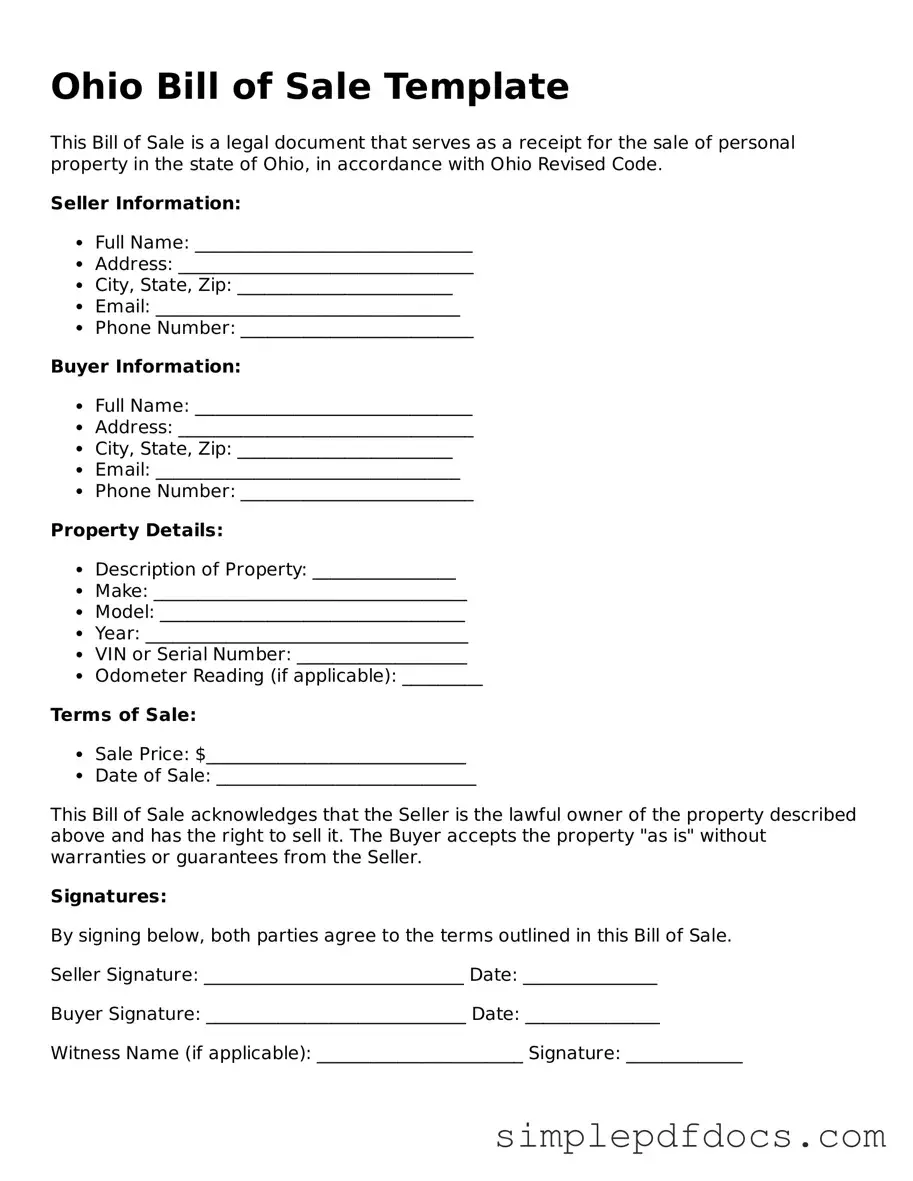When buying or selling personal property in Ohio, having a Bill of Sale form is essential for both parties involved. This document serves as a written record of the transaction, detailing important information such as the names and addresses of the buyer and seller, a description of the item being sold, and the purchase price. It's not just a formality; it provides legal protection and clarity, ensuring that both parties understand the terms of the sale. In Ohio, the Bill of Sale can be used for various types of transactions, including vehicles, boats, and even personal items like furniture or electronics. By properly completing this form, you can avoid potential disputes down the line and have peace of mind knowing that the transaction is documented. Whether you’re a seasoned seller or a first-time buyer, understanding the key components of the Ohio Bill of Sale will help facilitate a smooth and transparent exchange.
